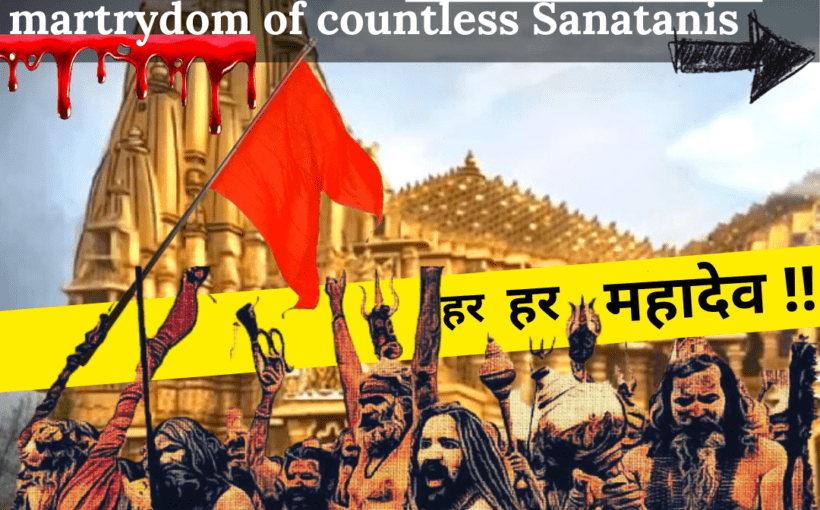Content
Background
Whenever we read or hear anything related to the history of the Somnath temple, the name of Mahmud Ghazni immediately strikes our mind. For many years we have been told that Mahmud’s Somnath expedition was a total collapse of the Indians and there was no resistance provided by the latter.
However, this is not true. Here we will cover the story of those fallen heroes who provided a gallant fight and resistance to Mahmud and his men in the Battle of Somnath.
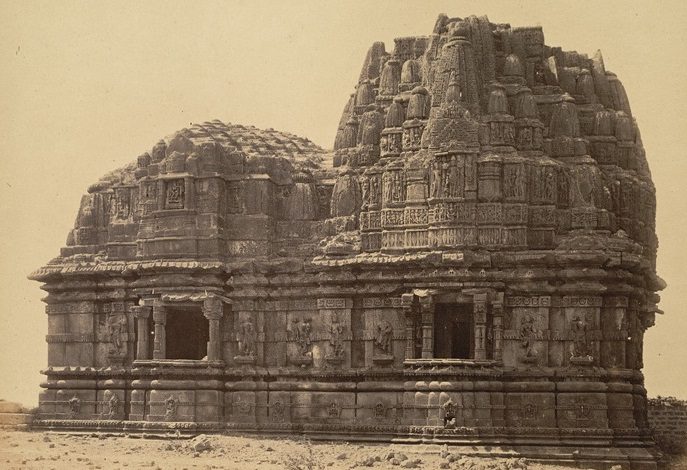
The temple was plundered by Mahmud Ghazni in
the Battle of Somnath
Image Source: Wikipedia
The rise of Yamini Turks was a turning point in the history of Medieval India. For centuries , Indians repulsed countless invasions led by the powerful Arabs but with the establishment of the Turkish rule over Ghazni (in Afghanistan) the Indians now had to prepare themselves for witnessing a fresh wave of barbarism.
Alptigin (Turkic) was a slave of the Samanid Empire who is responsible for establishing Turkish authority over the city of Ghazni. After securing the city the region witnessed a renewal of aggressive policies of the invaders towards its neighboring kingdom.
Later in the year 977 CE when Subuktigin ascended the throne of Ghazni several raids on the northwestern territories of India were launched by the Turks. The Shahi King Jayapala of Udabhandapur was the one who challenged the Turks.
But after a resistance that lasted for several years from this brave Shahi king, the Turks came out victorious. Mahmud Ghazni ascended the throne of Ghazni in 998 and soon after his accession, the hostilities between the Turks and the Indians became worse than ever.
Initially, he launched his assault on the Samanid king Abd al-Malik and subjugated Herat, Khurasan, and Balkh. The caliphs gave him the title of Yamin ud Daulah and Amin ul Millat.
Note: It is believed that Mahmud took an oath of conducting a holy war on the land of infidels every year.
He decisively defeated the Hindu king Jayapala and completely crushed the Shahis when he defeated Anandpala (in 1008) and Trilochanpala (in 1013) the successors of Jayapala.
Raids of Ghazni and the Resistance of Hindus
According to R.C.Majumdar’s The Struggle for Empire
There is a big misconception that Mahmud made a total of 25 or around 17 raids in India. But in reality, these numbers are not more than 12.
In 1009 Mahmud invaded Narayanpur (probably in Alwar). The people of the region fought bravely but in the end, they were completely routed. Sultan plundered the city and temples there.
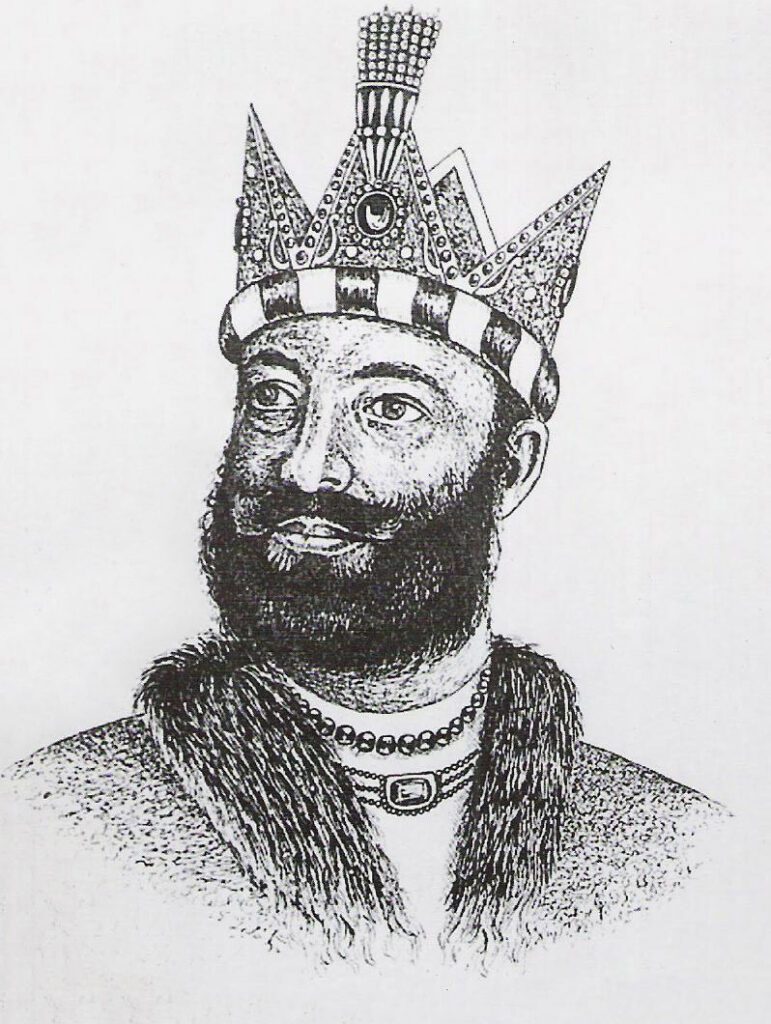
Image source: Wikipedia
In 1011 he attacked Thaneswar and demolish all the idols there. In 1018-1019 he sacked Mathura and burn all the temples there and the idols were taken back to Ghazni. This destruction continued for 20 days. Like Mathura, Kanauj was also plundered. From the Kanauj expedition, the Sultan’s wealth amounted to 20,00,000 Dirhams, 53000 war prisoners, and 350 elephants.
Battle of Somnath 1025 CE
The marvel of Somnath, according to many historians was built on huge blocks of stone and its roof was supported by 56 wooden pillars. The roof was in the shape of a pyramid-like structure and had 13 stories surmounted by 14 Golden domes too.
Inside the Sacred Temple, there was a Shiva Linga which was 7.6 feet tall and 4.6 feet wide. Also, a portion of Linga about 6 feet was hidden beneath the base. Daily about 340 people both male and female performed dances and sang in front of the linga.
In a single time, about 1000 Brahmans can worship or perform the rituals inside the temple. The temple also contained vast wealth and had gold, silver, pearls, and jewels. A long chain of gold whose weight was 200 mans was located inside the chamber.
The events before this expedition had been covered briefly in the above section. The infamous expedition of Mahmud on Somnath is only remembered for the disastrous defeat of the Indians and the plundering of the temple.
But in reality, this expedition on Somnath Temple was valiantly faced by the Hindus who died fighting for protecting their lands and temples.
Mahmud assembled his Turkish hordes (about 30,000 cavalry along with 200 Camel which carried food and water for the entire army) in the year 1025 and from Multan he marched toward the Kathiawar coast of Gujarat.
When the Turks reached Lodorva, an army of a handful of Hindus attacked the invaders although the idolaters were outnumbered yet they fought bravely. The Turks crushed all the natives and moved forward and reached Anhilwara (Patan in Gujarat).
Here the ruler of Anhilwara probably Bhima 1 evacuated the whole place because this region was defenseless and the mobility of Turkish cavalry will cause widespread destruction on the Hindu army.
For this many historians accuse Bhima 1 of a cowardly ruler but it is wrong to do so.
When the news of the Mahmud expedition reaches Modhera the Hindus decided to stop the advance of the former. Around 20,000 brave men stood face to face against the Mahmud at Modhera.
However, after witnessing stiff resistance from the Hindus the Turks came out victorious and reached their destination after this.
Battle
In January 1025 Mahmud reached Somnath and to force the idolaters to leave the temple he ordered his archer to launch an attack to displace the latter.
The siege of Somnath continued for several days in which the people (Hindus) fought bravely even when there was no hope of victory. The Somnath temple at that time was surrounded by a strong fort that was guarded by the Hindus.
Furthermore half of the Hindus probably Brahmans were inside the temple performing their final ritual before the war.
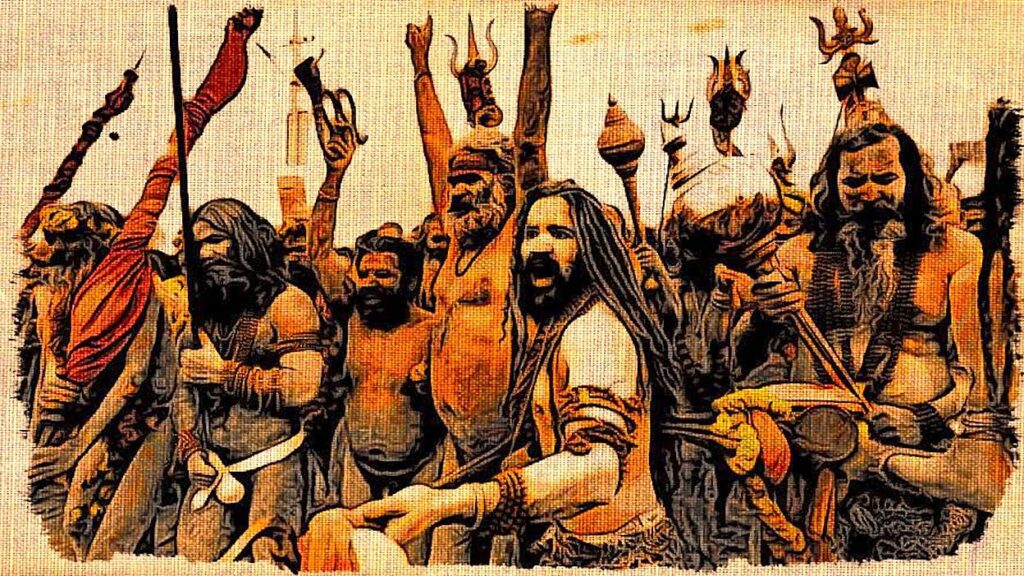
When Mahmud ordered for a vehement charge the helpless protectors of Somnath offered a heroic resistance. The natives who were fighting only with a handful of weapons fought till the evening.
After the initial charge from the Turks, the Hindus who were inside the temple came out and attacked the Turks. The tired army of Mahmud decided to retreat and the attack of a highly skillful military general was repulsed by the devotion of helpless idolaters.
The Turks were able to damage the fort wall but the damage was quickly repaired by the Indians and when the fighting began on the second day the idolaters fight even more valiantly than the previous day.
The situation of Mahmud became critical when on the third day an army of Kshatriyas arrived to reinforce their people. A total carnage ensued and band after band of people entered inside the temple to protect their sacred idols.
However, the tactics and military strategy of Mahmud were too much for the Hindus.
Around 50,000 people were slain by the Turks. Persian historian Muhammad Khandamir mentioned that people ran inside the temple to fight till their last breath and in that carnage, around 50,000 people lost their lives.
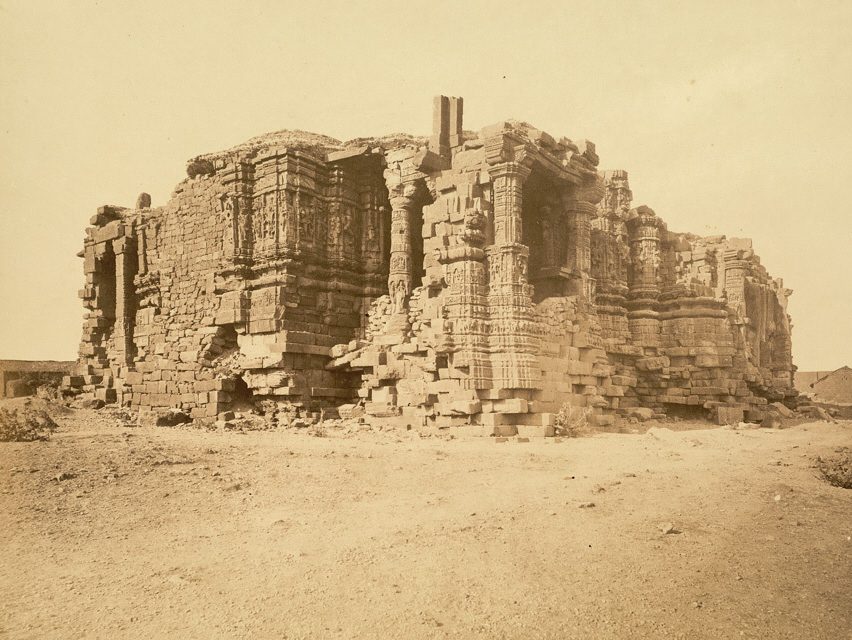
Image Source: Wikipedia
After this carnage, Mahmud marched inside the temple and he himself broke down Shiva Linga into pieces and captured all the wealth which was about 20,00,000 Dirhams. The temple was destroyed and the pieces of linga were taken back to Ghzani and were placed at the stairs of the Jami Mosque.
Aftermath
The plundering of Somnath deeply damaged the hearts of the fellow Indians and now they decided to launch a final assault on the Turks. Mahmud after capturing huge booty was aware of the fact that his army now had to retreat to Ghazni as soon as possible.
Among the Hindus, the charge to stop Ghazni’s retreat was taken by the Bhima 1 or Great Paramdeo (Paramadeva) of Malwa. Mahmud decided to take a different path for his retreat. The Turks decided to follow the route of Kutch and Sindh for their retreat.
When the invaders reached Kutch they almost forgot the actual path and caught themselves in a deserted plain. Here a Hindu came forward and presented himself as a guide to aid the tired army of Mahmud.
The Hindu guide was a devotee of Somnath and he took Mahmud army towards the inhospitable area of the desert where there was no water. For three days the Hindu guide fooled the Mahmud army and took them to a place where there was no water.
Mahmud ask him where to go in return the Hindu replied that I had devoted my whole life to Somnath and you mercilessly plundered it now I had brought you here where there is no water and the army of Hind is waiting to crush you.
Hearing these words Mahmud killed the guide and moved towards the Sind region for safety (probably to avoid any conflict with the Bhima 1 who was waiting for Mahmud to follow this route).
Mahmud avoided contact with Bhima 1 and his army but his army was attacked and harassed by the Jats during his return. He reached Ghazni in 1026 carrying a huge booty and a harassed mind which was done by the Jats.
The caliph appreciated the plundering of Somnath and even sent a letter to Mahmud for his success. Many historians regard Mahmud as the champion of Islam and surely there is no doubt that he was the greatest military leader in the medieval era but as for Indians he was nothing more than a religious bigot who plundered sacred temples, killed innocent men, women, and even children.
The Indians did everything they can to protect their Temple , whether it was the Jats who attacked the retreating army of Mahmud, the Hindu who disguise Mahmud as a guide, the Brahmans who died fighting to protect the Shiva Linga of Somnath or the 20,000 warriors of Modhera and Somnath who fought till their last breath to protect their country.
LIKE WHAT WE ARE DOING? DONATE TO DHARMAYUDH !
If you support what we are doing and would like to contribute to help us grow and reach more Indians to teach them more about such forgotten historic Indian Heroes and stories, please consider donating any amount. It will help us grow.
Follow us on Instagram to stay updated on new posts. @dharmayudh_com

